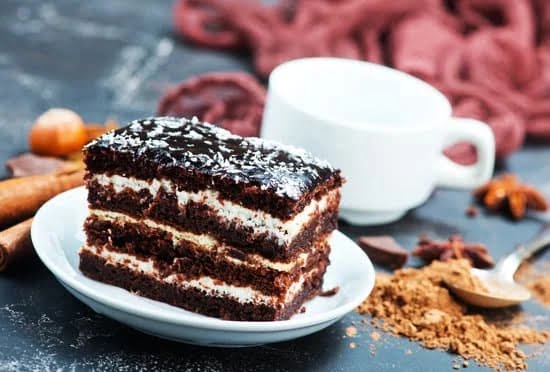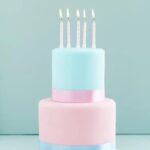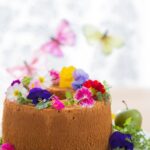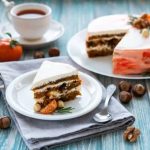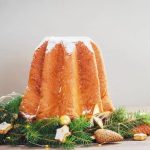Cake decoration is an art form that holds incredible power. It has the ability to transform a simple dessert into a visually striking masterpiece that not only tastes delicious but also creates a memorable experience for any occasion. Whether it’s a birthday celebration, wedding reception, or holiday gathering, the way a cake is decorated plays a crucial role in setting the tone and leaving a lasting impression on guests.
The importance of cake decoration cannot be overstated. It not only enhances the overall aesthetic appeal but also reflects the skill and creativity of the baker. With its exciting and endless possibilities, cake decoration allows individuals to unleash their imagination and create unique designs that showcase their personality and style.
To embark on this delightful journey of cake decorating, it is essential to understand the basics. Familiarizing oneself with the necessary equipment and tools will ensure smooth execution of ideas. Additionally, knowing which type of cake to work with, whether it be buttercream or fondant, lays the foundation for successful decoration techniques.
In this article, we will dive deep into various aspects of cake decoration, from mastering basic techniques to exploring creative frosting methods such as piping and elaborate buttercream flower designs. We will learn how to achieve flawless finishes with fondant and create intricate designs using stencils or airbrushing techniques. Furthermore, we will explore unique trends and personalized ideas that make every occasion truly special.
So come along on this enchanting journey into the world of cake decoration as we unlock the secrets to creating stunning cakes that are not only delicious but also visually captivating masterpieces guaranteed to impress any crowd. Get ready to unleash your creativity and discover the best ways to decorate a cake.
Understanding the Basics of Cake Decoration
Introduction: The Power of Cake Decoration
Cake decoration is an essential aspect of creating an impressive and visually appealing masterpiece. Whether it’s a birthday cake or a wedding cake, the way it is decorated can make all the difference in capturing attention and delighting guests. It allows bakers to showcase their creativity and turn a simple cake into a work of art. With the exciting and endless possibilities that cake decoration offers, it’s important to understand the basics before diving into more complex techniques.
Essential equipment and tools needed for cake decoration
Before embarking on your cake decorating journey, it’s important to have the right tools at your disposal. Investing in high-quality equipment will not only make your decorating experience more enjoyable but also yield better results. Some essential tools include an offset spatula for smoothing frosting, piping bags and tips for creating intricate designs, a turntable for easy access to all sides of the cake, and various sized icing combs for achieving textured patterns.
Types of cake to work with
Different cakes require different techniques and frostings. Buttercream is one of the most common types of frosting used in cake decoration due to its versatility and ease of use. It can be easily colored, flavored, or piped into intricate designs. Fondant, on the other hand, provides a smooth finish that is perfect for sculpting detailed decorations like flowers or figures. Ganache is another popular choice for its rich flavor and glossy finish.
Basic techniques to master before advancing
Before moving on to more advanced techniques, it’s crucial to have a firm grasp on basic cake decorating techniques. This includes proper leveling and torting of cakes to ensure even layering, crumb coating with buttercream or ganache as a base layer, and achieving sharp edges with fondant or buttercream finishes. Additionally, mastering piping skills such as making rosettes or writing letters will lay a solid foundation for more intricate designs in the future.
By understanding the basics of cake decoration, you’ll have a solid foundation to build upon as you explore more advanced techniques. From essential equipment and tools to different types of cake and basic decorating methods, these fundamentals will help you create beautiful and professional-looking cakes. So, don’t be afraid to get started because the world of cake decoration is full of exciting possibilities waiting for you to explore.
Creative Frosting Techniques
Cake decoration is not just about the taste; it’s also about the visual appeal. One of the most effective ways to create stunning designs on a cake is through creative frosting techniques. With the right tools and a little practice, you can transform a simple cake into an edible work of art. Here are some techniques to help you get started:
- Piping with Buttercream: One of the most versatile and commonly used frostings for cake decoration is buttercream. It’s creamy, easy to work with, and allows for intricate designs.
To achieve beautiful buttercream piping, start by filling a piping bag fitted with your desired tip (such as a star or petal tip) with buttercream frosting. Hold the piping bag at a 45-degree angle and gently squeeze while applying pressure to create different shapes and designs, like rosettes, shells, or borders. - Using Different Piping Tips: Experimenting with different piping tips can give your cakes a unique and professional finish. There are various tips available in different shapes and sizes that can be used to create patterns, textures, or three-dimensional effects on your cakes. For example, a round tip can be used for writing or making dots, while a leaf tip can create lifelike foliage on floral-themed cakes.
- Play with Colors: Frosting doesn’t have to be just one color. You can use food coloring or gel colors to create vibrant shades or ombre effects on your cake. Get creative by using multiple piping bags filled with differently colored frosting and combine them in one swirl for a beautiful gradient effect.
By mastering these creative frosting techniques, you’ll be able to elevate your cake decorating skills and impress everyone with your beautifully designed creations. Remember, practice makes perfect – so grab some extra cupcakes or cookies to practice on before attempting your masterpiece.
Wow Factor with Fondant
Step-by-step guide to working with fondant to achieve a flawless finish
Fondant is a versatile and popular medium for cake decoration, as it provides a smooth and polished appearance. To achieve a flawless finish with fondant, it is important to properly prepare the cake before applying the fondant.
Start by covering the cake with a thin layer of buttercream or ganache, commonly referred to as the crumb coat, which helps to seal in any loose crumbs and create a smooth surface. Next, roll out the fondant to an even thickness on a clean and lightly powdered surface.
Carefully lift the rolled fondant using a rolling pin and drape it over the cake. Smooth out any air bubbles or wrinkles by gently pressing the fondant against the sides of the cake. Trim off any excess fondant using a sharp knife, and voila. You have achieved a flawless finish with fondant.
Sculpting detailed fondant decorations such as flowers, figures, and shapes
One of the greatest advantages of working with fondant is its ability to be sculpted into intricate designs. Whether you are looking to create beautiful flowers, cute figurines, or unique shapes, fondant provides endless possibilities. To sculpt detailed decorations with fondant, start by coloring small portions of fondant using gel food colors. Knead the colored fondants until they are pliable and easy to work with.
Then, use various shaping tools such as ball tools or veining tools to shape and texture your creations. For example, when creating flowers, use petal cutters or flower formers to give them dimension and shape. With practice and patience, you can master the art of sculpting detailed decorations that will elevate your cakes to new heights.
Tips for avoiding common fondant challenges
While working with fondant can be incredibly rewarding, it does come with its own set of challenges. Here are some tips to help you avoid common fondant issues and ensure a successful cake decoration experience:
- Keep your hands well moisturized: Dry hands can cause fondant to crack or tear. Apply a small amount of vegetable shortening to your hands before handling the fondant.
- Roll fondant evenly and with confidence: Unevenly rolled fondant can lead to a lumpy appearance on the cake. Use guide rings or rolling pin spacers to achieve an even thickness, and roll the fondant out in one smooth motion.
- Prevent sticking: Fondant has a tendency to stick to surfaces and tools. To prevent this, lightly dust your work surface and rolling pin with powdered sugar or cornstarch.
- Avoid trapping air bubbles: Air bubbles can distort the appearance of the fondant. Smooth out any air bubbles by gently pressing on them with your fingertips or by using a small pin to release trapped air.
By following these tips, you can overcome common fondant challenges and create cake decorations that will impress both visually and tastefully.
The Art of Cake Stenciling
Cake stenciling is a popular cake decoration technique that allows bakers to create intricate and stunning designs on their cakes. By using stencils, bakers can achieve professional-looking patterns and motifs with ease. This section will explore the art of cake stenciling, providing guidance on how to create beautiful designs and recommending methods for applying stencil techniques.
To create intricate and stunning designs using stencils, bakers have two main options: royal icing or powdered sugar. Royal icing is a versatile option that can be piped onto the stencil for precise and detailed designs. Alternatively, using powdered sugar gives a more delicate and ethereal effect, perfect for creating elegant patterns on cakes. Both methods require careful application to ensure clean lines and consistent coverage.
When it comes to selecting and customizing cake stencils, there are endless possibilities. Pre-made stencils are readily available in various designs, including floral motifs, geometric patterns, and even character themes. Bakers can also take their creativity a step further by creating their own custom stencils. This allows for personalized touches and unique design elements that truly reflect the occasion or theme of the cake.
| Stencil Type | Method |
|---|---|
| Royal Icing | Pipe icing onto stencil using piping bag |
| Powdered Sugar | Use a sifter to evenly distribute sugar over stencil |
| Custom Stencil | Create personalized design using cutting tools (e.g., X-Acto knife) on acetate sheet |
Gorgeous Cake Toppers and Embellishments
Cake toppers and embellishments are a fantastic way to add a touch of elegance and personality to any cake. Whether you’re celebrating a birthday, wedding, or other special occasion, there are countless options for creating beautiful and unique decorations.
One idea for cake toppers is to make them edible. Chocolate ganache drizzles can add a decadent touch to any cake, while sugar flowers can create a stunning floral arrangement on top. For those looking to customize their cake even further, consider making personalized fondant or gum paste decorations. These can be shaped into any design or figure, allowing you to truly showcase your creativity.
In addition to edible decorations, non-edible embellishments can also be used. Fresh flowers are a classic choice and can effortlessly elevate the aesthetic of your cake. Consider using flowers that match the color scheme or theme of your event for a cohesive look. Alternatively, ornaments such as ribbons, bows, or small figurines can be added for a more playful or festive feel.
When it comes to incorporating cake toppers and embellishments, it’s important to consider the overall design and balance of the cake. Too many decorations can overwhelm the visual appeal of the cake itself. Aim for a focal point on top of the cake while complementing it with smaller accents around the sides. Experiment with different placements and arrangements until you achieve the desired look.
Remember, cake decoration should reflect your personality and style, so don’t be afraid to get creative with your cake toppers and embellishments. Whether you choose something elegant and classic or opt for more whimsical elements, adding these finishing touches will surely make your cake stand out from the rest.
Mastering Airbrushing Techniques
Airbrushing is a popular and versatile technique that can take your cake decoration to the next level. Whether you want to create flawless gradients, intricate designs, or add a touch of elegance, mastering airbrushing techniques is essential. In this section, we will explore the possibilities and necessary precautions for successfully airbrushing a cake.
To achieve professional-looking results with an airbrush, it is important to start with the right equipment. Invest in a high-quality airbrush kit that includes an air compressor, airbrush gun, and different nozzle sizes for various effects. Familiarize yourself with the components of the kit and practice using it before applying it on a cake.
Before applying any color to your cake, make sure it is properly covered in a smooth base layer of frosting or fondant. This will provide an even surface for the paint and prevent the colors from absorbing into the cake. It is also recommended to lightly freeze or chill your cake before airbrushing as this will make it easier to handle and reduce any risk of smudging or smearing.
When using an airbrush gun, start with lighter colors first and gradually build up to darker shades. Hold the gun at a consistent distance from the cake (usually around 4-6 inches) and use even strokes to achieve an even distribution of color. Be mindful of overspraying by using gentle pressure on the trigger.
While practicing airbrushing techniques, remember to experiment with different stencils and masks to achieve intricate designs. Stencils can be used to create patterns, silhouettes, or gradient effects on your cake. Always secure them firmly against the cake surface before spraying.
Lastly, do not forget about safety precautions when working with an airbrush gun. Make sure you are in a well-ventilated area or wear protective gear such as goggles and masks if needed. Keep in mind that some food coloring sprays may contain allergens or chemicals that should be used with caution.
By mastering airbrushing techniques, you can add depth, dimension, and a professional touch to your cake decoration. The possibilities are endless, from creating unique gradients to intricate designs. Practice patience and precision as you experiment with this exciting method of cake decoration.
Unleashing Your Creativity
Cake decoration is not limited to traditional designs and techniques. In fact, it is an art form that allows for endless creativity and innovation. This section will explore some unique and trendy ideas that can elevate your cake decorating skills to the next level.
One of the cutting-edge trends in cake decoration is the drip cake. This style involves elegantly dripping glaze or ganache down the sides of a frosted cake, creating a visually striking effect. The drips can be created using different colors or flavors, adding depth and dimension to the cake. To achieve this look, simply melt some chocolate or confectioners’ glaze until it reaches a pourable consistency, then carefully drizzle it over the edges of the cake.
Another trendy technique that has gained popularity is mirror glaze. Mirror glaze creates a shiny, reflective surface on cakes that resembles a mirror. It involves pouring a glossy glaze made from gelatin, sugar syrup, and condensed milk onto a chilled cake, resulting in a mesmerizing effect. To achieve this look, you can experiment with various colors and patterns to create stunning visual effects.
For those seeking unconventional ways to decorate their cakes, consider using sugar lace or edible gold leaf. Sugar lace can be used to create intricate and delicate designs that add an elegant touch to any cake. Edible gold leaf can be applied to cakes for a luxurious and glamorous appearance. These materials allow for customization and personalization of your creations.
Thinking outside the box also means experimenting with hand-painted designs and customized messages on cakes. With food-grade coloring gels or edible ink pens, you can easily transform plain cakes into edible works of art. Whether it’s painting beautiful flowers or writing personalized messages for loved ones, hand-painting adds a unique touch to your creations.
Unleash your creativity by exploring these unique and trendy ideas in cake decoration. Experiment with different techniques and materials to create stunning, one-of-a-kind cakes that will impress your friends and family. Don’t be afraid to think outside the box and let your imagination run wild – the possibilities are endless when it comes to cake decoration.
| Trendy Idea | Description |
|---|---|
| Drip Cakes | Elegantly dripping glaze or ganache down the sides of a frosted cake. |
| Mirror Glaze | Pouring a glossy, reflective glaze made from gelatin, sugar syrup, and condensed milk onto a chilled cake. |
| Sugar Lace | Using sugar lace to create intricate and delicate designs on cakes. |
| Edible Gold Leaf | Applying edible gold leaf to cakes for a luxurious and glamorous appearance. |
| Hand-Painted Designs |
Cake Decoration for Special Occasions
Cake decoration is not just limited to everyday treats; it can also be tailored to suit the theme or style of special occasions. Whether it’s a birthday, wedding, or holiday celebration, cake decoration can play a major role in creating a memorable centerpiece that reflects the mood and significance of the event.
For birthdays, incorporating themed elements like characters or seasonal motifs can add a playful touch to the cake. From princesses to superheroes, there are endless possibilities for creating cakes that match the interests and personalities of the celebrants. For holidays like Christmas or Easter, using festive colors and decorations such as snowflakes or bunny figures can make the cake an instant hit at any gathering.
Weddings are another occasion where cake decoration takes center stage. It’s important to consider the overall theme and style of the wedding when choosing decorations for the cake. Whether it’s a traditional tiered cake adorned with delicate sugar flowers, or a modern design with metallic accents, the cake should complement the aesthetic of the wedding and reflect the couple’s unique love story.
Special occasions deserve special cakes, which is why milestone events and anniversaries call for extra attention to detail in their decoration. From elegant designs featuring hand-painted elements to personalized messages written on fondant plaques, these cakes are meant to tell a story and create lasting memories. By incorporating elements that are meaningful to the person or couple being celebrated, these cakes become more than just desserts – they become works of art that embody love, joy, and milestones achieved.
In conclusion, cake decoration offers so many exciting opportunities for creativity and personalization. No matter what the occasion may be, whether it’s a birthday party filled with laughter or a wedding filled with romance, decorating a cake in accordance with that specific occasion can truly elevate it into an impressive masterpiece.
With various techniques like fondant sculpting, piping beautiful buttercream flowers, stenciling intricate designs, airbrushing flawless gradients – the possibilities are endless. So take your cake decorating skills to the next level and create stunning treats that leave a lasting impression on everyone who sees and tastes them.
Frequently Asked Questions
How do you make a cake look special?
A cake can be made to look special in various ways. One popular method is to create a visually appealing design on the frosting, using different techniques like piping, stenciling, or creating intricate patterns with a variety of icing colors.
Adding edible decorations such as fresh flowers, fruit slices, or chocolate shavings can also elevate the appearance of a cake and give it a unique touch. Additionally, incorporating non-edible decorative elements like ribbons, bows, or personalized cake toppers allows for customization and adds an extra element of elegance or fun to the overall presentation.
What can I top a cake with besides frosting?
While frosting is commonly used to top cakes, there are several delicious alternatives that can bring a different taste and texture to your creation. Whipped cream is a classic choice, which can be flavored with extracts like vanilla or almond for added depth. Cream cheese icing provides a tangy and creamy option that pairs well with many flavors of cakes.
For those looking for lighter options, drizzling warm caramel or chocolate ganache over the cake not only adds richness but also creates a professional finish. Fresh fruit compotes or coulis are perfect toppings for fruity cakes and provide a refreshing contrast. Finally, a dusting of powdered sugar or cocoa powder can give your cake an elegant simplicity.
What are the 5 kinds of cake decorating?
Cake decorating encompasses various techniques that allow bakers to create stunning designs and transform simple cakes into works of art.
The five main types of cake decorating include piping, fondant/gum paste work, buttercream painting/painting on cakes using food colors, stenciling/spraying designs onto cakes using specially designed stencils or airbrushes, and sculpting/carving detailed shapes out of cake itself.

Welcome to our cake decorating blog! My name is Destiny Flores, and I am the proud owner of a cake decorating business named Cake Karma. Our mission is to provide delicious, beautiful cakes for all occasions. We specialize in creating custom cakes that are tailored specifically to each customer’s individual needs and tastes.

